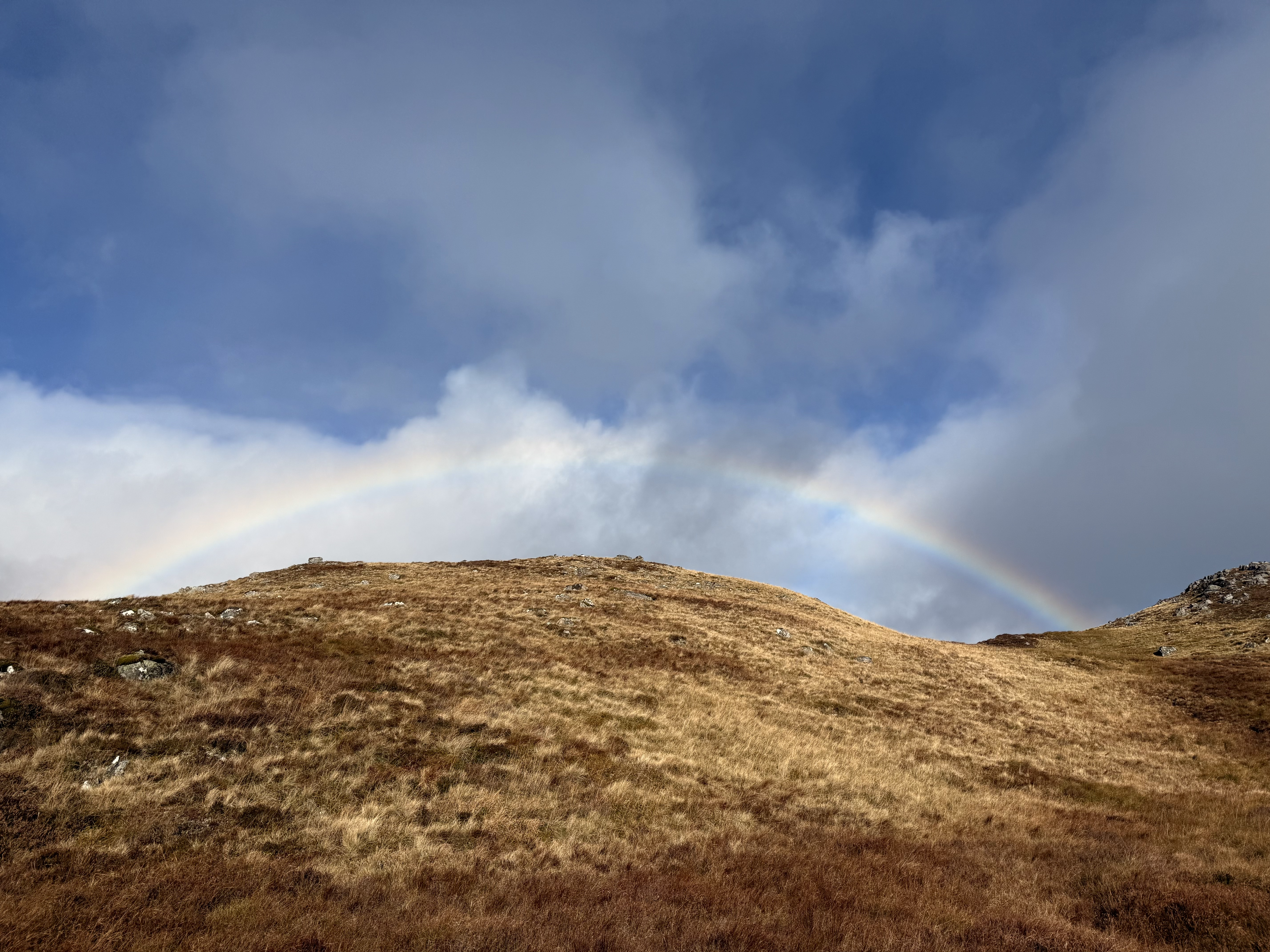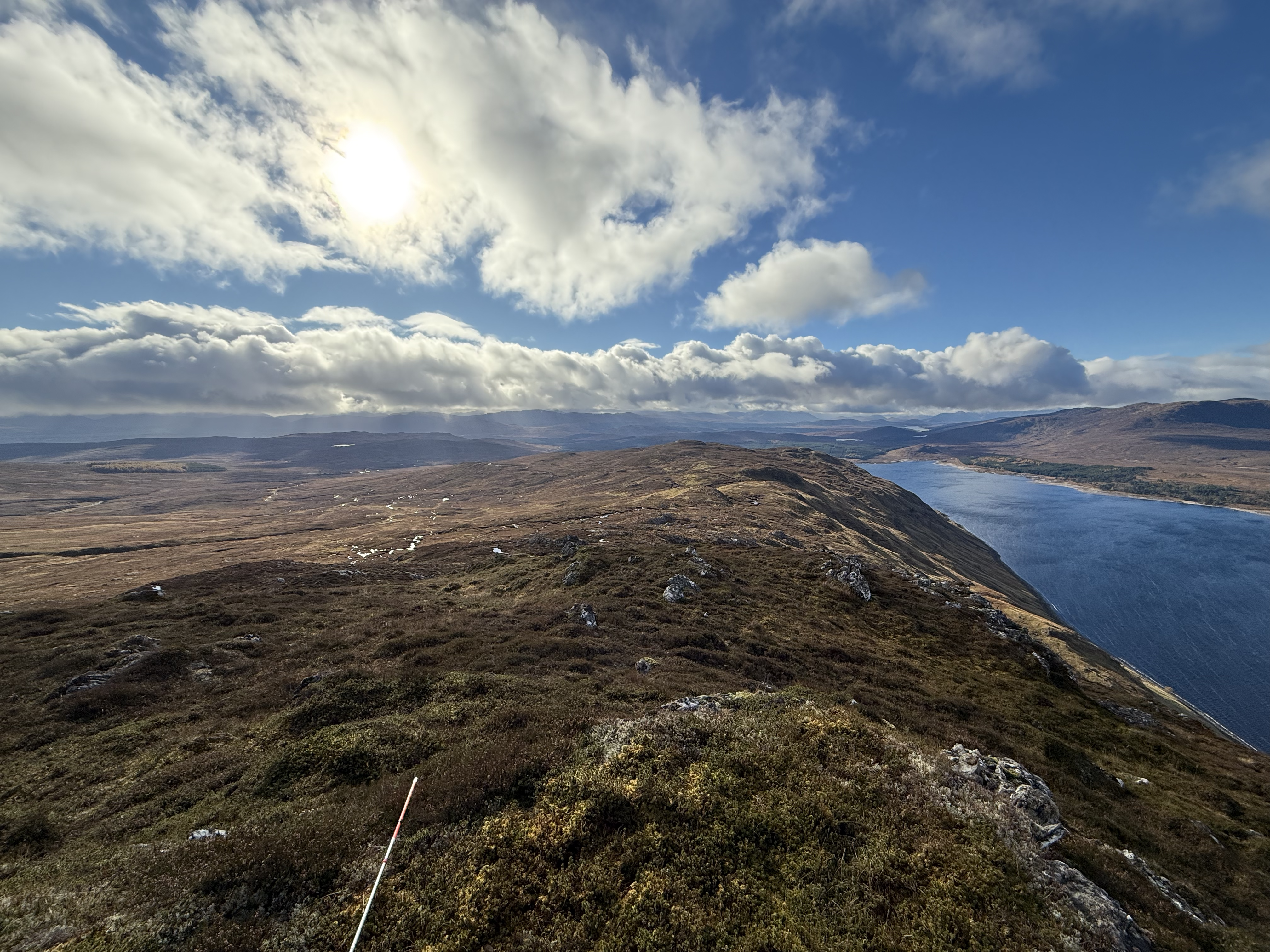When we destroy ecosystems, we’re not just losing what we know is there, we’re losing everything we haven’t yet had the chance to discover.

“Yet often the mountain gives itself most completely when I have no destination, when I reach nowhere in particular, but have gone out merely to be with the mountain as one visits a friend with no intention but to be with him.”
― Nan Shepherd, The Living Mountain
Before my first trip up to Scotland earlier this year, I read Nan Shepherd’s The Living Mountain for my family book club. Shepherd, a Scottish poet and novelist who spent most of her life walking the Cairngorms, wrote with an intimacy about the landscape that was both philosophical and deeply grounded in lived experience. Her approach was rooted in her presence, about developing a visceral connection with the landscape.
The work
At Zulu Ecosystems, we’re an end-to-end nature restoration project developer working across the UK. From peatland and woodland restoration to thinking about biodiversity and water management, we work with estate owners, water companies, farming groups, universities, and more to help heal the damaged British landscapes. I have been developing analytics and tools to help us deliver more projects, with our office in Notting Hill, learning how data pipelines work and learning what science looks like in a business environment.
Most of my time recently has been thinking about how to model erosion features—areas of exposed bare peat that are wounds in the landscape. But these aren’t just aesthetic concerns. Globally, degraded peat emits around 2 billion tons of greenhouse gases annually. Think about that scale for a moment. And that’s not even considering all the species that depend on healthy peat habitats.
The pervasive challenge with remote sensing and modeling is how to distinguish signal from noise. In our case, that means refining algorithms to reduce false positives, which in this case are places the model identified as erosion features that were actually patches of heather or other erosion-like features. It’s one thing to see these polygons on a screen in London; it’s another to see, feel, and walk around them in the field.
Two feet on the ground
I was fortunate to go on a site visit in October, where the peatland surveying was methodical and absorbing. We conducted peat depth and condition assessments, detailed habitat surveys, herbivore impact studies, and biodiversity inventories. Most of our work involved species identification and assessing herbivore presence within assigned 4-by-1-meter grid areas. It is the kind of systematic fieldwork that requires complete attention. You become locked into the landscape in a way that’s both focused and meditative.
There’s something powerful about getting two feet on the ground in places you’ve only known through QGIS on a laptop screen. The abstractions of spatial data suddenly have texture, smell, the sound of wind and water. Peat can make some fascinating sounds when you listen closely. Shapes become places, not just pixels.
During these surveys, I felt peaceful and present in a way that reminded me of Shepherd’s writing. Here was that quality of “being with” rather than simply observing or measuring. Yet there was also a deeper current of reflection, with questions about how we got here, where we fit into these systems, and what our role is in this landscape.
The best lunch

Lunch time is one of my favorite times. On Wednesday of the surveying, I climbed up to a knoll overlooking the landscape, excited to see the view from higher ground. What I found there was stunning. Sitting with my lunch, looking down a steep slope down to the loch, I felt the cold wind coming off the water, a reminder of the raw intensity of the elements, the power of this place.
This was where Shepherd’s philosophy really set in for me. I wasn’t there to conquer anything or reach some destination. I was just there to be present with the mountain. The landscape opened up and the vastness of the setting really set in. I found myself reading the terrain differently and thinking about how it has transformed over time, sometimes for the better, but increasingly for the worse because of human activities and interventions.
The weight of our influence
We are, as a species, so innovative, creative, complicated, and selfish. Our influence on the world, especially over the last few centuries, is incredibly tangled and thus so hard to unravel and undo. While we’re just a speck on the timeline of this planet, we’re an undeniably large speck. The evidence presents itself to you in these Scottish landscapes, in the transition zones from heather to bog, in the grazing pressures, in the erosion features that I’ve been modeling.
The sphagnum moss that carpets healthy sections of the peatland tells a different story. Its colors pop against the darker bare peat soils, vibrant greens, reds and oranges that look almost alien, like a coral reef on land. But it’s the temporal scale that hits me most. This moss, decomposing slowly into peat over centuries, is one of the planet’s most effective carbon storage systems. A single hectare can store up to 60 tonnes of carbon, acting as a massive sink slowly giving itself back into the soil.
The timescale of these habitats is massive. The repetition of these plants returning into the landscape, building carbon storage layer by layer, century after century. At the end of the day its also incredibly fragile, due to how quickly we can undo that work when we put our fingerprint on these systems.
Models versus reality
On our final day, I had the chance to do something closer to Shepherd’s wandering. While collecting data on the erosion features I’d been modeling, I could really dive into how the algorithms were performing in the real world. The most valuable insights came from understanding the false positives, or more specifically learning to distinguish the spectral signatures of actual bare peat from heather or standing water that might look similar to a sensor.
This ground truthing made me think about both the power and limitations of remote sensing methods. Models are incredibly useful tools, but they’re just that—tools. They help us understand patterns, try to identify the extent to which we are restoring the habitat. But they can’t replace the knowledge that comes from being present in the landscape, from developing the kind of familiarity that Shepherd knew so well.
Different priorities
One of the most illuminating aspects of the site visit was learning how peatland restoration fits into the broader ecosystem of activities on the estate. Things are dynamic and interconnected. There are multiple priorities overhanging the land, things like hunting, deer culling, woodland management, that all influence and are influenced by each other. My experience on site taught me the value in understanding how human activities, wildlife management, hydrology, and vegetation dynamics all interact.
This complexity is a good reminder for how ecosystem restoration is both an art and a science. The technical knowledge, understanding carbon cycles, hydrology, species relationships, is all important. But even more so is the ability to see the whole system, to understand how different priorities and stakeholders can work together rather than against each other.
London
As I write this back in London, I think about how the field experience has changed my relationship with the work I’ve been doing. The images I see on my computer screen represent specific places, that knoll where I had lunch, the places where I saw the most vibrant sphagnum, the spots where deer presence told stories.
But there’s something else Shepherd understood that feels more urgent now: when we damage these landscapes, we’re not just losing what we know is there. We’re losing everything we haven’t yet had the chance to discover. The complex relationships between species we haven’t identified, the climate services we haven’t quantified, the carbon storage potential we haven’t realized.
In our work at Zulu Ecosystems, we’re trying to reverse some of that loss. Project by project, we’re helping landscapes heal. In the grand scheme of things, it’s slow work, ultimately linked to the timescale of flora and fauna like the patient accumulation of peat by sphagnum moss. But at the same time it’s incredibly urgent work, given the scale of the challenges we face.
Sitting on that knoll, feeling the wind off the loch, I felt lucky to be doing this work. Grateful, excited, and inspired to be part of efforts that bring together technology and ecological wisdom, that connect the precision of remote sensing with the irreplaceable knowledge that comes from being present in the landscape.
We are just one species in this whole thing. But we’re also the species with the greatest power, either to heal or harm. In the Scottish Highlands, surrounded by a rich mosaic of creatures and processes, that responsibility feels real.
The mountain, as Shepherd knew, gives itself most completely when we approach it not as conquerors but as visitors and companions. The peatlands don’t need us to save them. They need us to stop breaking them, and then step back and let the moss do what it’s always done. Ultimately, we need these habitats more than they need us, and we need to reconcile this and act on it. Our job is simply to create the conditions for the land to heal, and in the process it can teach us a thing or two about ourselves.